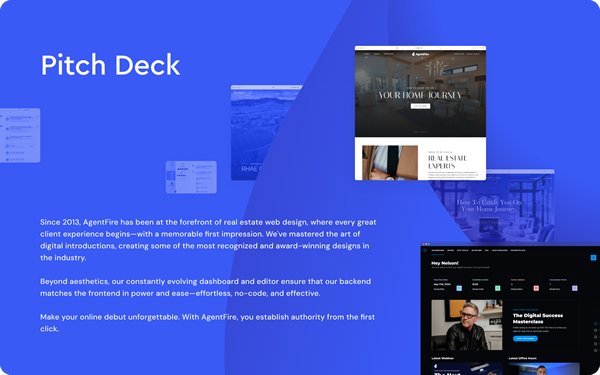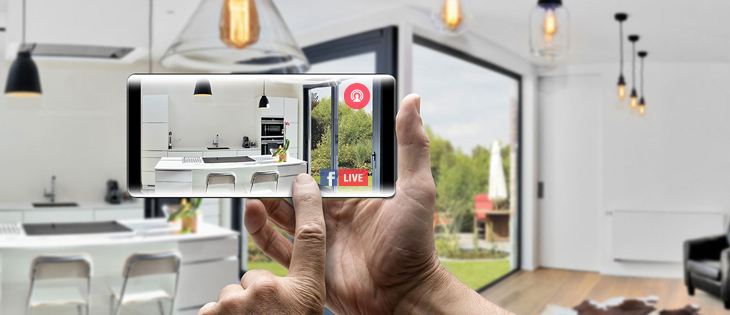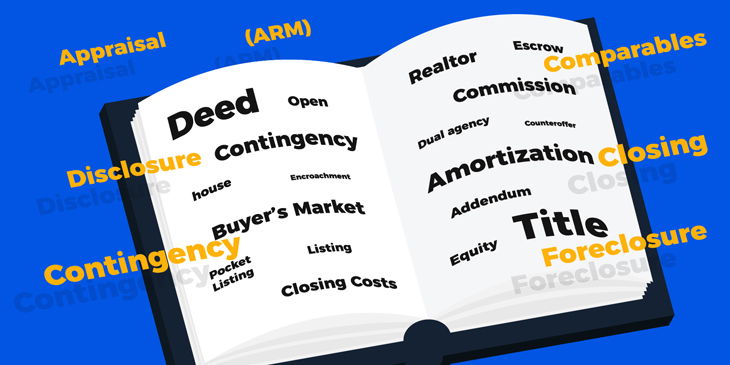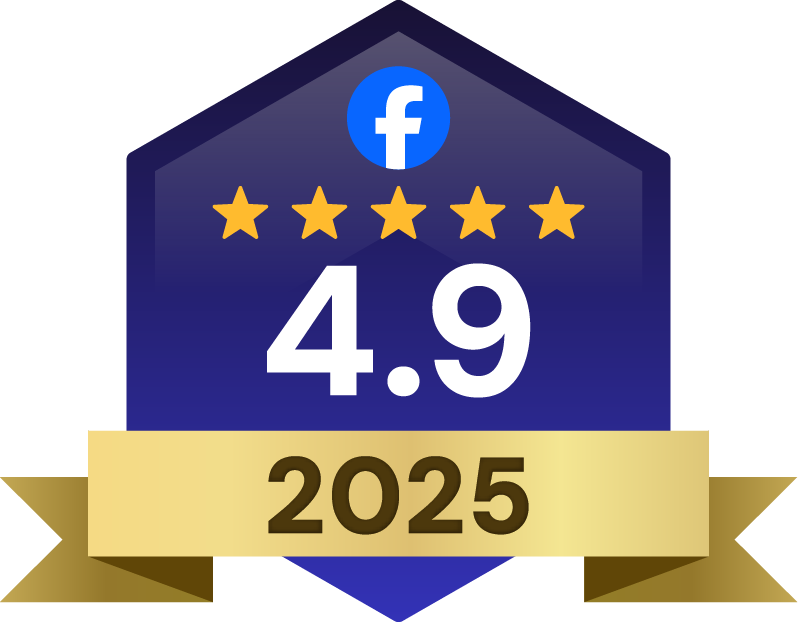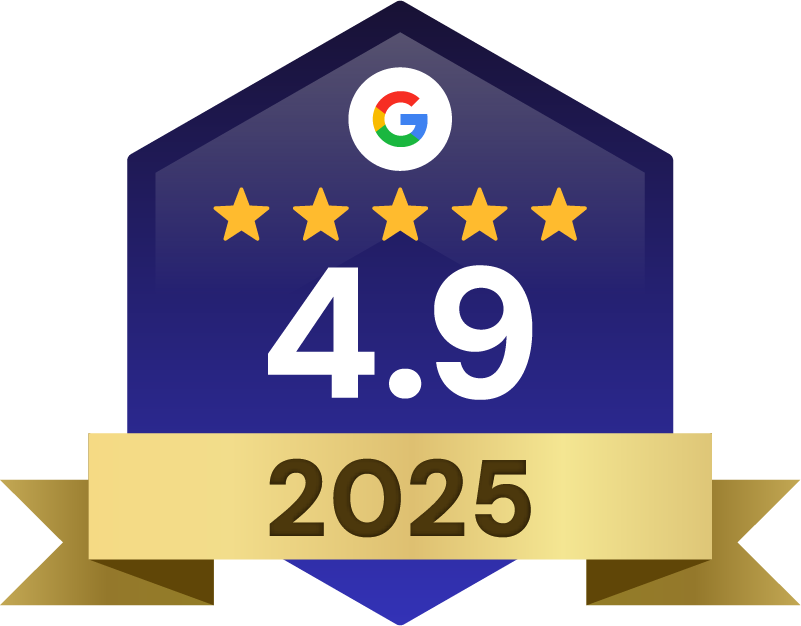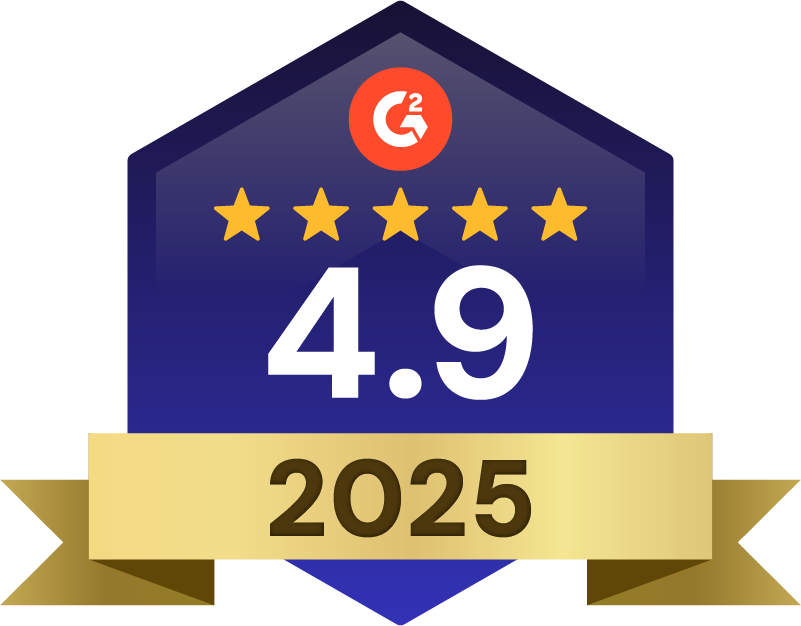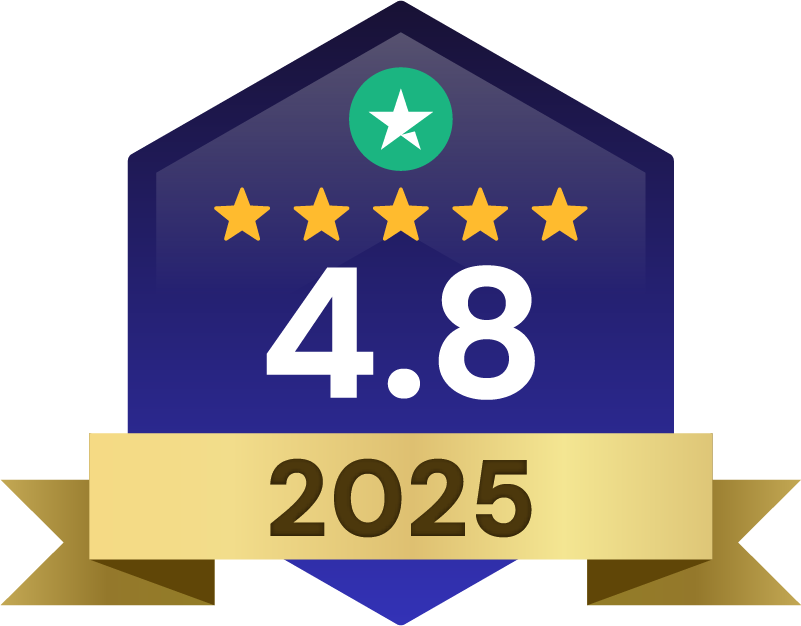In the current global pandemic situation, virtual open houses have become an essential tool in a successful real estate agent's arsenal. Learn how to implement them into your marketing campaigns in today's article.
Branding & Design Industry Insights
A virtual open house is more than just a live video feed. It’s your chance to open the door to a real estate listing for remote house hunters, out-of-town buyers, and anyone who’d rather enjoy a property preview from home. Over the past few years, the real estate industry has fully embraced online property tours, video marketing, and live streaming, and that shift is only accelerating. Virtual tours have become less of a novelty and more of a must-have strategy for both agents and sellers looking to reach more qualified buyers.
If you’ve been thinking about upgrading your open house formula, this guide will walk you through exactly how a virtual open house works, what tools you’ll need, how to promote it, and how to follow up. Along the way, we’ll answer the most common questions from buyers and provide tips for hosting a successful event that can help you generate leads—and excited offers—from near and far.
What Is a Virtual Open House?
A virtual open house is an online event where an agent or homeowner gives potential buyers an in-depth tour of a property via live or recorded video. While the specific format varies—from real-time Zoom calls to pre-recorded video tours—the goal is the same: reveal the property’s features to serious buyers who want more than just photos on a listing site.
The best part? You can invite an unlimited number of attendees, often with far less time and hassle than scheduling multiple in-person showings. Plus, you don’t have to worry about tidying up for foot traffic every weekend. Instead, everyone tunes into a single event or explores a digital tour at their own pace.
Why Are Virtual Open Houses Important?
Virtual open houses blend the convenience of online shopping with the personal touch of agent-led showings. Nowadays, most homebuyers begin their search online, so giving them a thorough, interactive sense of the property can be the deciding factor that leads them to book a real viewing or even submit an offer remotely.
Key benefits include:
- Wider Reach: Out-of-state or international buyers can easily join, and busy local buyers can hop into a quick virtual tour while on lunch break.
- Pre-Screening Tool: Reduce foot traffic from window-shoppers. Anyone who decides to see the place in person after the virtual event is likely very interested.
- Time-Saving & Cost-Effective: Promote once, prepare once, and get in front of all your prospective buyers at once. You’re not booking multiple open houses or repeatedly re-staging the property.
How Does a Virtual Open House Work?
Prospective buyers join a scheduled live stream or access a pre-recorded or 3D interactive tour of your listing. Here’s the typical process:
- Scheduling & Promotion: First, agents pick a time and date for the event (often a weekend or after-work slot). Then, they advertise it via social media, email campaigns, and multiple listing services (MLS).
- Home Preparation: The property is cleaned, staged, decluttered, and lit just like an in-person open house.
- Live or Recorded Tour: If it’s live, the agent uses a camera or smartphone to walk through the property in real time, highlighting each room and checking comments for questions. If it’s pre-recorded, attendees watch a polished video or 3D model while listening to agent commentary.
- Q&A and Follow-up: Interested buyers can ask questions in real time (on Zoom, Facebook Live, etc.) or contact the agent afterward. The agent follows up to convert interest into offers or private showings.
When done right, virtual open houses save time for both parties and can spark genuine excitement—often leading to fewer but more targeted in-person showings.
Essential Tech for a Virtual Open House
You don’t need a Hollywood film crew, but a few core tools can help your virtual open house shine:
- Live streaming Software: Zoom, Google Meet, Facebook Live, or Instagram Live let you broadcast in real time. For 3D tours, you might use Matterport or specialized 360° platforms that can also stream.
- Recording Hardware: At minimum, you will need a decent smartphone with reliable internet. Consider a stabilizing device like a gimbal for a smooth, professional look. For advanced 3D tours, you might use a 360° camera or LiDAR-equipped device.
- Lighting & Audio Gear: If parts of the home are dim, bring portable LED lights. For better audio, a lapel mic or wireless mic ensures your voice doesn’t echo or fade as you walk around.
- Scheduling & Promotion Tools: Use social media, email marketing, a CRM, and/or a scheduling platform to invite and remind potential viewers.
- High-Speed Internet: A must if you’re live streaming. If the home’s WiFi is spotty, consider bringing a personal hotspot.

6 Steps to Hold a Virtual Open House
Once you’re equipped with the right tools, here’s the main workflow to ensure a seamless event.
Step 1: Choose the Right Format
Decide whether you’ll do a live stream, pre-recorded video, or interactive 3D tour. Each format offers unique benefits:
- Live Stream: Great for immediate Q&A, as it mimics a real walk-through.
- Pre-Recorded: Produces a more polished video. People can watch anytime.
- 3D Interactive Tour: Buyers can explore the home’s layout on their own.
Many agents use a combination—live streaming a property but also sharing a 3D model link afterward.
Step 2: Prepare the Home
Just like a traditional open house, staging is critical. Potential buyers will notice every detail, even on camera:
- Declutter & Clean: Put away personal items or anything that makes the space look smaller.
- Enhance Lighting: Open blinds/curtains and turn on the lights.
- Highlight Key Features: Does the home have custom shelving, new appliances, or a spacious backyard? Make sure those are visible.
- Privacy Check: Remove items that could reveal personal info (mail, photos) or indicate the seller’s identity.
Step 3: Market the Event
Promote your open house weeks in advance so people can tune in:
- Social Media: Post listing photos and a “teaser” video on Facebook, Instagram, TikTok, or LinkedIn. State the day, time, and how to join.
- Email Campaigns: Send blasts to your database and fellow agents, inviting them or their clients.
- MLS & Listing Sites: Many allow you to indicate a “Virtual Open House” date/time or share your streaming link.
- Community Platforms: If relevant, lean on real estate Facebook groups or local forums.
Step 4: Host the Tour
If live, arrive early to set up your camera, confirm your WiFi stability, and do a quick test run:
- Greet Attendees: Introduce yourself, the address, and property highlights.
- Walk Room by Room: Start at the entrance and move logically through living areas, kitchens, and bedrooms. Finish with exteriors or special features (patios, pools).
- Q&A & Engagement: In a live stream, encourage attendees to ask questions. If pre-recorded, provide a clear method for them to send inquiries.
- Stay Calm & Authentic: Minor tech hiccups can happen—address them calmly, and viewers will appreciate your professionalism.
Step 5: Follow Up with Attendees
Once the tour ends, follow up while the property is still on their mind:
- Thank-You Emails: Send a note with a property flyer, floor plans, or a link to the recorded tour.
- Answer Questions: If people asked about local schools, taxes, or the roof’s age, respond promptly.
- Offer Additional Materials: Serious buyers might want extra info: local school details, property inspection reports, or a 3D model link. Provide them via email or direct message.
- Offer Private Showings: Invite leads for an in-person look if they’re local.
- Gather Feedback: Ask what they thought of the home and your tour. That insight can help you refine future events.
Step 6: Track Your Results
Record how many viewers attended, how many leads you gathered, and any next steps. Understanding your virtual open house metrics helps you adjust your marketing strategy, especially if you plan to host more events of this type.

A Practical Example: Hosting a Virtual Open House
Here’s how a hypothetical real estate agent might host a successful virtual open house in a weekend:
- Monday: Confirm with sellers that you’ll market a Saturday 2 pm live stream. Start promoting it online.
- Wednesday: Send an email blast to your buyer list and local brokers, and share on social media.
- Friday: Perform a final check to ensure the home is staged. Conduct a quick video test run with your phone.
- Saturday (Event Day): Arrive early at 1 pm. Turn on lights, open blinds, ensure strong WiFi. At 2 pm sharp, go live. Introduce yourself, highlight property features, and respond to questions. End around 2:30 pm.
- Saturday Evening: Send a thank-you email to all registrants with a link to the recorded event (if available) plus any property details. Offer to schedule private tours.
- Next Week: Follow up again with those who expressed serious interest. Track how many new leads you captured.
This process uses minimal extra equipment beyond a decent smartphone and some marketing know-how. Simple but effective.
Frequently Asked Questions About Virtual Open Houses
How do you hold a virtual open house at the perfect time?
It’s best to choose a weekend or around lunchtime, but consider your target market’s schedules. If you’re listing a commuter-friendly condo, an evening after typical work hours might get more attendance. If it’s a family-oriented neighborhood, a Saturday or Sunday afternoon might work better.
Can you sell a house virtually?
Absolutely. Some buyers—especially relocators—may decide to purchase without ever stepping foot into the home, relying on robust virtual tours, live viewings, and thorough inspections. It requires clear communication, transparent disclosures, and sometimes more digital documentation, but yes, virtual sales happen often.
Can a virtual open house replace in-person showings?
Many agents treat virtual open houses as an additional marketing tool rather than a blanket replacement. Even if the buyer eventually tours the property in person, the virtual event helps them decide if it’s worth the drive. In some cases—especially if the buyer is overseas or relocating long-distance—the entire transaction might happen virtually, so investing in a reliable virtual marketing process is crucial.
The Bottom Line
Virtual open houses allow agents and sellers to reach an expanded network of potential buyers with a single, streamlined effort. By preparing the home carefully, leveraging user-friendly tech, marketing effectively, and following up with strong communication, you can transform what would have been a routine open house into a dynamic event that sparks real interest and builds your reputation as a forward-thinking real estate professional.
As real estate consumer behavior continues to evolve, you’ll find that hosting a virtual open house is not just a novelty—it’s a solid strategy for ensuring your listings stand out in a saturated market. Try it for your next property, and see how it can help you connect with motivated buyers who might have otherwise missed that critical “first look.”
Ready to level-up your real estate marketing game? Discover how AgentFire can help you create unforgettable virtual open house experiences—schedule a demo today.

